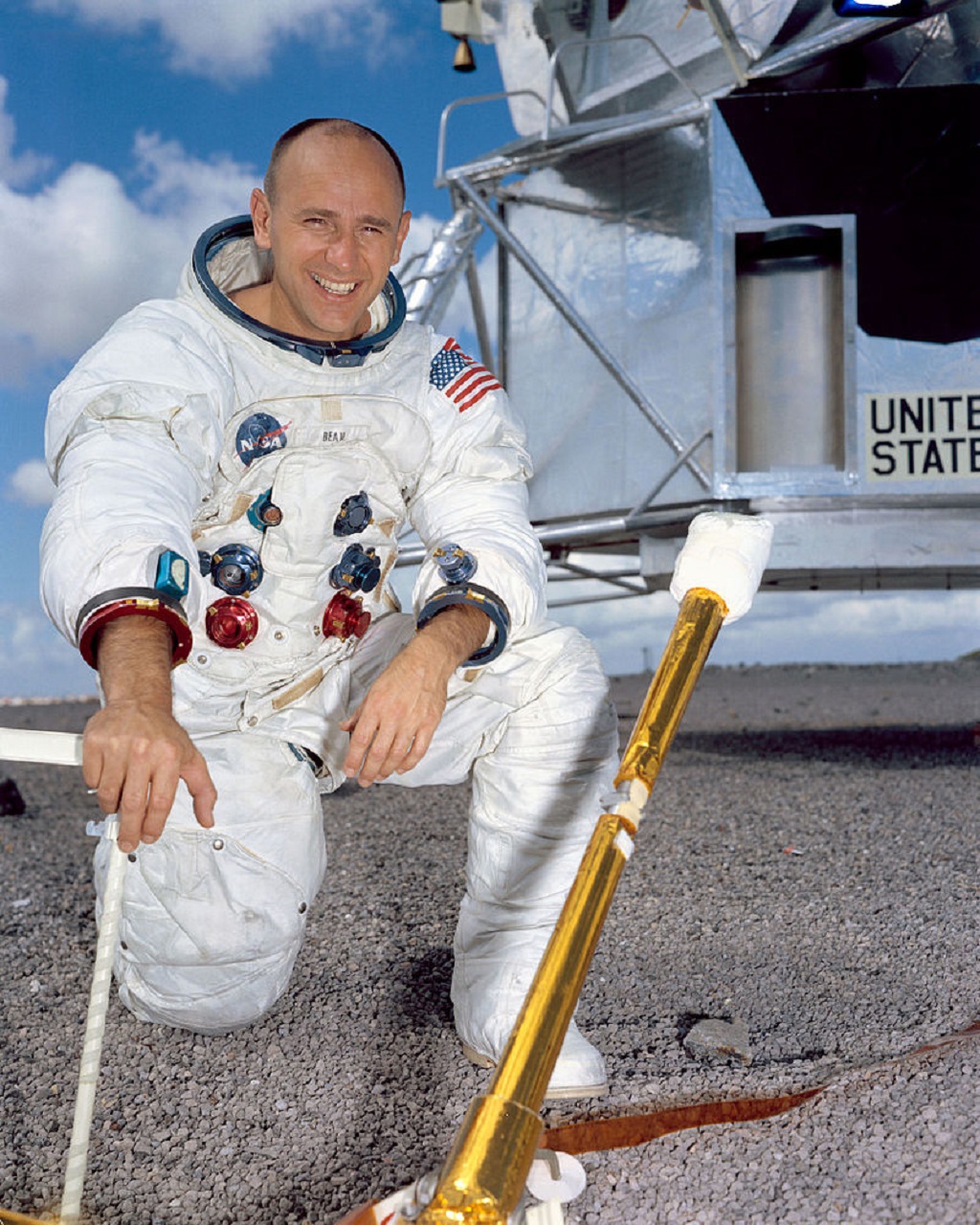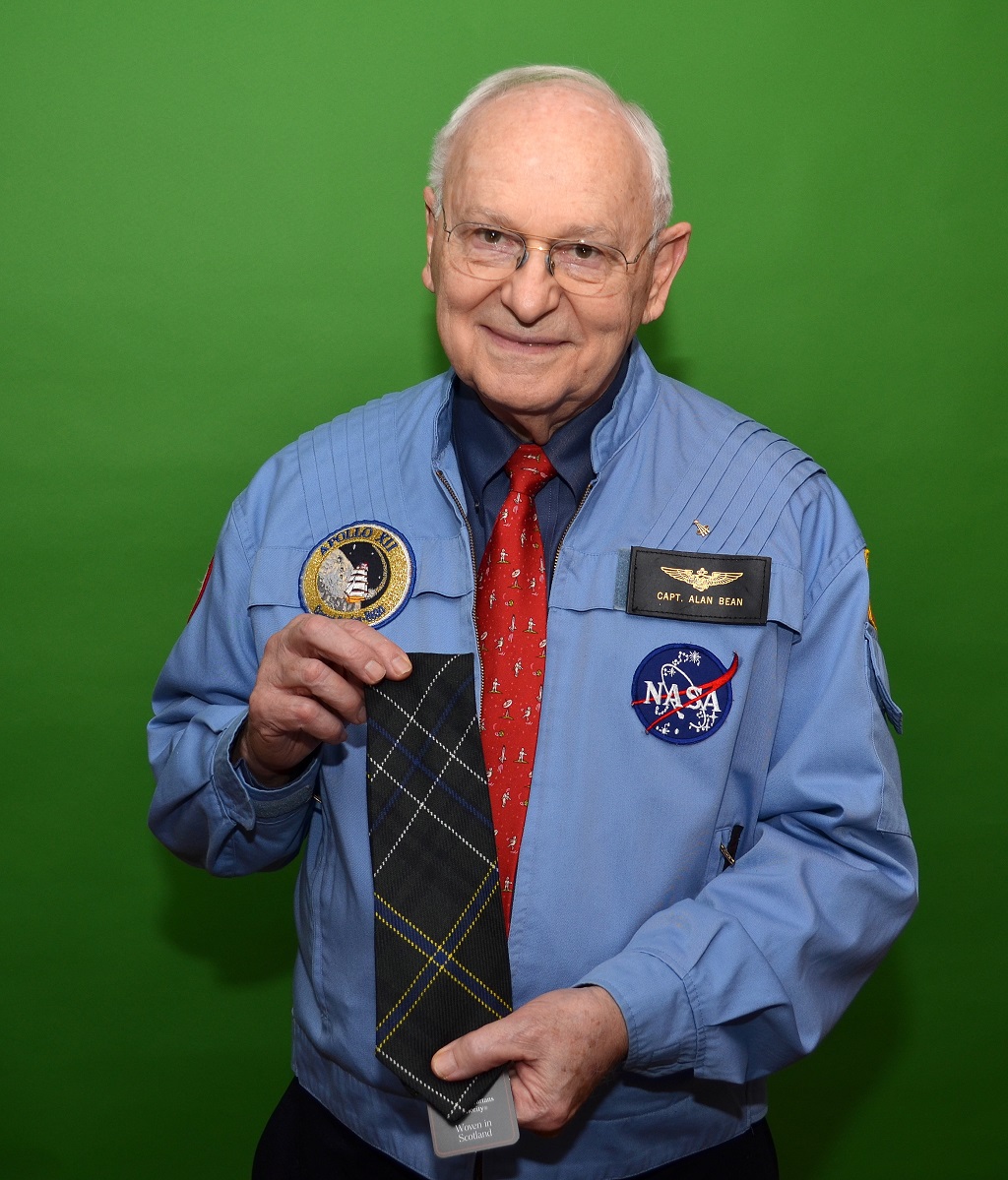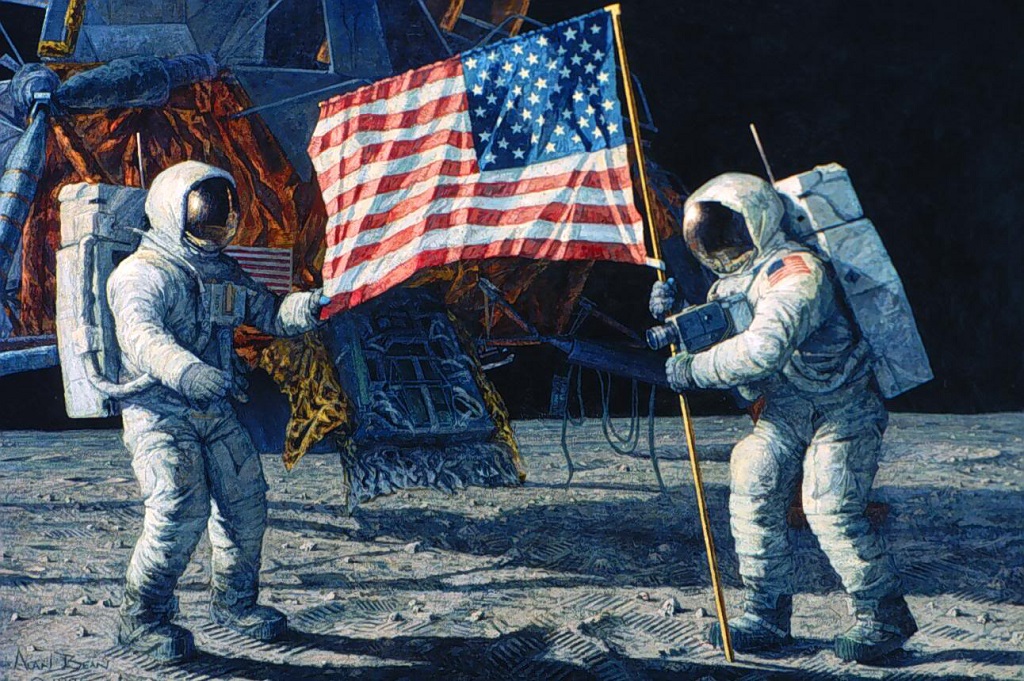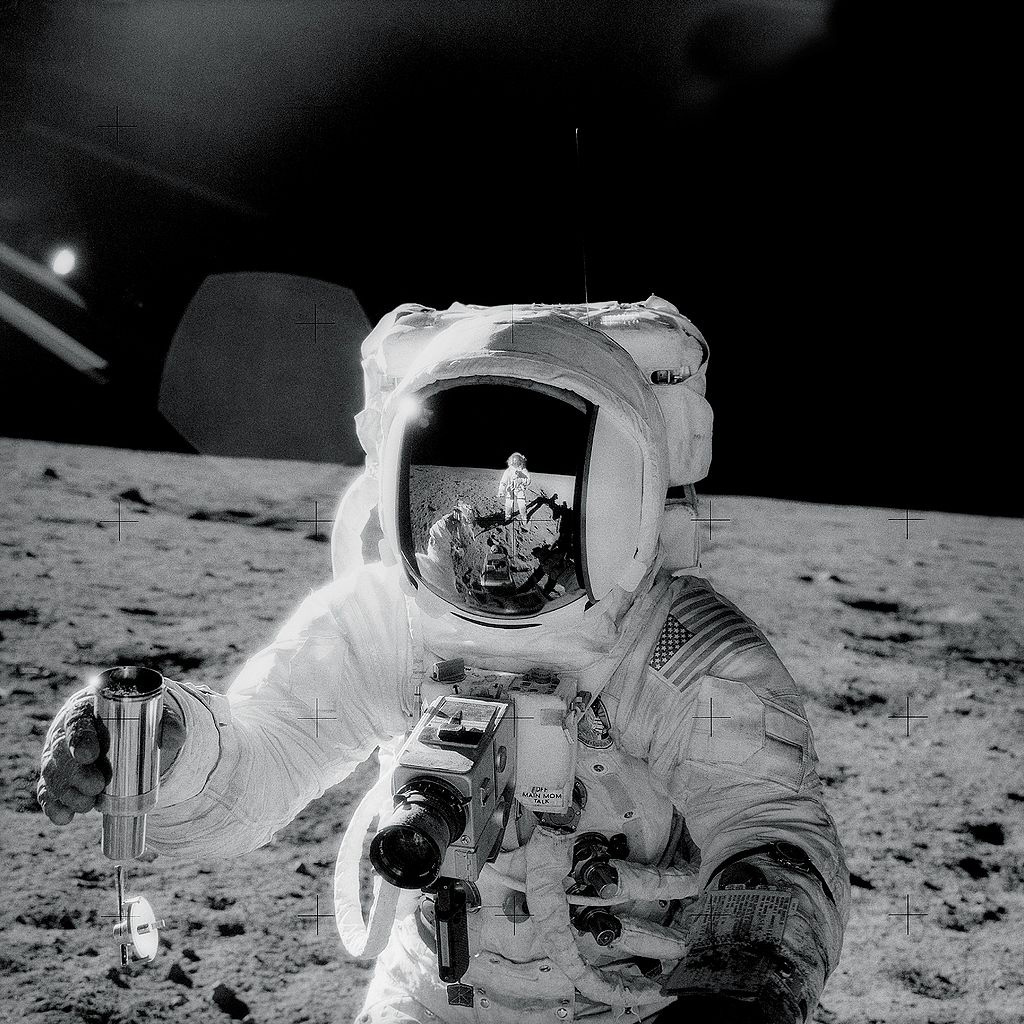
The late Alan Bean was the Scotsman on the moon
Artist Alan Bean was part of the second lunar landing – and in tribute to his Scots ancestry, he took a swatch of MacBean tartan with him.
Sadly, in May this year, Alan passed away at the age of 88.
Prior to his death, Alan was an artist, who liked to paint figures set in a landscape. His art shows people exploring bleak, desert-like scenes. They are conducting scientific investigations, operating equipment or walking over rugged terrain. Sometimes, they are simply having fun.
He was one of a small group of painters who specialise in astronomy and space subjects.
However, in Alan’s case he brought something unique to his depictions of lunar landscapes – he had actually been there.
Alan Bean is the only artist ever to have walked on another celestial body and his vivid memories, the source of his striking art, are of his trip to the surface of the moon. In 1969, Alan was a member of the crew of Apollo 12, which followed Neil Armstrong’s pioneering flight and made mankind’s second lunar landing.

Alan Bean in his days as an astronaut
With crewmate Pete Conrad, he landed on the Moon’s dusty Ocean of Storms, while a third crew member Dick Gordon, also of Scots ancestry, waited for them in lunar orbit.
Alan and his commander stayed on the Moon for a day and a half. The pair donned spacesuits and climbed out of their craft twice to make exploratory moon walks over the mysterious, alien landscape.
In tribute to his Scottish ancestry, he carried in his spacecraft a swatch of MacBean tartan, which he later brought back to Earth.
Alan was first and foremost a proud American, a pioneer and visual chronicler of his country’s extraordinary achievements in space. But he was also very conscious of his Scottish ancestry and the origins of Clan MacBean in the United States.
‘I realised that as I stepped on the Moon on the morning of November 19th, 1969, I represented my forefathers of the Clan MacBean,’ Alan reflected in a 2016 interview with us. ‘And I love the story of John MacBean, the first of the clan to come to America.’

Alan Bean shows off his Apollo 12 tartan tie
John was born around 1633 and was brought up in Strathdearn, Inverness-shire. Aged 18, he found himself on the losing side at the Battle of Worcester, as Cromwell’s army smashed the forces of King Charles II. One of 8,000 Scots taken captive and transported to America, like many Scottish prisoners of war, John MacBean was put into forced labour, with the teenager finding himself in a sawmill owned by Scottish landowner Nicholas Lissen in Dover, New Hampshire.
John clearly stood out from the crowd, as within a few years he had wooed and married his master’s daughter, Hannah. Gaining his freedom, John became a business partner with his father-in-law, and went on to have a prosperous career in farming, real estate and tanning, fathering 12 children and living to the age of 85.
John MacBean’s transformation from captive indentured labourer to wealthy son-in-law of his former master was a source of amusement to Alan and his two crewmates on Apollo 12.
‘Our crew used to joke that I brought the good luck of the MacBean genes on our moon flight,’ Alan recalled.
One painting has a particularly Scottish theme. Clan MacBean Arrives on the Moon shows Alan in his bulky white spacesuit, standing in front of the flag planted by him and his commander. He presented this work to the Clan MacBean Society in the US, along with a piece of his lunar tartan.
Each of Alan’s paintings has a story to it and recording these lunar episodes in art is his mission in life. He rose early and painted every day in his studio in Houston, Texas.

One of Alan Bean’s paintings
‘Now, I’ve just finished a new one of Neil arriving on the Moon,’ said Alan. His subject was the first moonwalker, the late Neil Armstrong, who famously had family roots in Langholm, Dumfriesshire.
‘I have painted Neil as I believe he will be remembered by history. There he is, larger than life, standing confidently on the surface of the Moon. He handled the responsibilities of being the first man on the Moon with such humility and grace.’
Alan had a different outlook from many of the other astronauts. Like them, he was a former test pilot, highly qualified, trained and tested to the limit. He discharged his piloting and scientific duties impeccably – but he was already a practicing artist when he went into space. Despite the rush of his meticulously planned lunar timetable, he explored the moon with an artist’s eye.
Alan didn’t use canvas for his paintings, but special aviation plywood which he covers in a thick plaster-like layer mixed with marble dust. When it hardens, he sculpts this with some of his actual moon tools.
‘I use my moon boots. I use the hammer I had on the Moon, a drill bit, and I make marks all over it to create my uniquely textured surface. It’s a kind of carving process, and I go back and forth until I get something that looks good.’
When that sculpted surface is complete, he layered on his chosen scene with acrylics. Sometimes he used the realistic tones of spacesuits, equipment and the lunar landscape. At other times, inspired by his favourite artist Claude Monet, he introduced subtle colours to convey the extraordinary feeling of being on the moon.
Alan first came to Scotland as a young pilot in the US Navy, berthing at Rosyth and getting leave to tour Edinburgh and the castle. Later trips took him to Perthshire and other parts of the country.
‘I was struck by how green everything is, the hills and the varied scenery,’ he recalled.
Since returning his lunar tartan to Earth, Alan guarded it carefully, occasionally donating a piece to deserving institutions such as St Bean’s Chapel in Perthshire and recently to the Scottish Tartan Museum.

Alan Bean on the moon
Inspired by Alan’s gift, Ken MacDonald of Kiltmakers in Paisley designed and registered an Apollo 12 tartan. Its colours reflect the MacBean and Gordon tartans of the mission’s two Scots-heritage astronauts, and the greyness of the Moon.
‘I wore my Apollo 12 tartan tie the other night,’ Alan said. ‘I opened my closet, saw it hanging there and decided to wear it.’ Robert Law, an astronomer who works at the Mills Observatory in Dundee, is the proud owner of the first Apollo 12 tartan kilt.
‘No-one else of the 12 of us that walked on the moon is interested in art,’ said Alan. ‘I know a lot of stories and images will be lost if I don’t paint them. I’m a believer in following your dreams every day.’
Alan Bean had an extraordinary, life-transforming experience all those years ago, working, exploring and enjoying being on the Ocean of Storms. It may be decades before men and women return to the Moon, but it will happen, and Alan hoped that one day a painting of his will hang in a gallery there.
This feature was originally published in 2016.
TAGS

